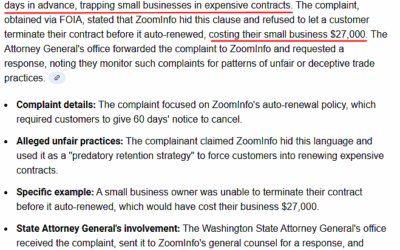Sales Tactics: Is Cold Email Spam? A Comprehensive Guide to Cold Emailing that Works
Cold emailing is a strategy often used to reach out to potential customers or clients who have had no prior interaction with your business. But this approach raises a crucial question: Is cold email spam? Understanding the nuances of cold emailing can help you harness its potential without crossing into the realm of spam.
What is Cold Emailing?
Cold emailing is the practice of sending unsolicited emails to individuals or businesses in an attempt to initiate a conversation, build relationships, or generate leads. Unlike spam, cold emails are targeted and personalized, aiming to provide value and establish a connection.
Cold Email vs. Spam: Key Differences
1. Personalization: Cold emails are tailored to the recipient, addressing their specific needs, interests, or pain points. Spam, on the other hand, is often generic and sent in bulk without consideration for the recipient’s context.
2. Relevance: A well-crafted cold email offers relevant information or solutions that align with the recipient’s interests. Spam typically contains irrelevant or unwanted content, often aiming to deceive or manipulate.
3. Opt-Out Options: Legitimate cold emails include a clear and easy way for recipients to opt out of future communications. Spam emails often lack this feature, making it difficult for recipients to unsubscribe.
Legal Considerations for Cold Emailing
To ensure your cold emails are compliant with regulations and not considered spam, it’s essential to follow legal guidelines:
CAN-SPAM Act (U.S.)
– Accurate Information: Ensure your email headers, subject lines, and sender information are truthful and not misleading.
– Opt-Out Mechanism: Provide a clear and easy way for recipients to opt out of future emails, and honor these requests promptly.
– Physical Address: Include a valid physical postal address in your emails.
GDPR (EU)
– Consent: Obtain explicit consent from recipients before sending marketing emails.
– Data Protection: Handle personal data responsibly and transparently, ensuring recipients know how their data will be used.
Best Practices for Effective Cold Emailing
1. Research Your Recipients: Understand the needs, interests, and pain points of your target audience. Personalize your emails based on this research to increase relevance and engagement.
2. Craft Compelling Subject Lines: Your subject line is the first thing recipients see. Make it intriguing and relevant to encourage them to open your email.
3. Provide Value: Offer valuable information, insights, or solutions that address the recipient’s specific needs. Avoid hard selling in your initial email. Do your research and reach out to people that might be interested in your products/solutions/services by using some Buyer Intent techniques.
4. Keep It Short and Sweet: Respect your recipient’s time by keeping your email concise and to the point. Highlight the most important information early in the email.
5. Include a Clear Call to Action: Clearly state what you want the recipient to do next, whether it’s scheduling a call, downloading a resource, or visiting your website.
6. Follow Up: If you don’t receive a response, send a polite follow-up email. Persistence can pay off, but avoid being overly aggressive or pushy.
Tools to Enhance Your Cold Emailing Efforts
1. Verified Email: Ensure your email list is accurate and up-to-date to reduce bounce rates and increase deliverability.
2. CRM Software: Use customer relationship management (CRM) tools to manage and track your email campaigns, helping you stay organized and efficient. Also use a CRM enhancer that that you are keeping the data in your CRM as up-to-date as possible.
3. Email Templates: Develop customizable email templates to streamline your process while maintaining a personalized touch.
4. Analytics Tools: Track key metrics such as open rates, click-through rates, and response rates to measure the effectiveness of your campaigns and make data-driven improvements.
Cold emailing, when done correctly, is a powerful tool for building relationships and generating leads. By understanding the differences between cold emails and spam, adhering to legal guidelines, and following best practices, you can maximize the effectiveness of your cold email campaigns while maintaining a positive reputation. Remember, the key to successful cold emailing is to provide value, personalize your approach, and respect your recipients’ preferences.
By following these strategies and focusing on providing value, you can create cold email campaigns that not only avoid the spam folder but also drive meaningful engagement and results.
Recent Posts
Top 5 B2B Data Providers for Energy / CleanTech Companies in 2026 (Reviewed)
Article Summary Energy and clean technology companies need accurate, industry-specific B2B data to identify active projects and decision-makers. The best B2B data providers offer more than contact lists, including intent signals, growth triggers, and verified...
Top 5 B2B Data Providers for Staffing and Recruiting Companies in 2026 (Reviewed)
Summary: For staffing and recruiting firms, having accurate, up-to-date B2B data is essential. Whether you’re targeting HR directors, hiring managers, or C-suite executives, a high-quality data provider can save hours of research and give you a competitive edge. In...
Why Zoominfo Contracts are Hard to Cancel
Quick Summary ZoomInfo contracts often come with long-term commitments and annual billing. Automatic renewals and strict cancellation policies make terminating services tricky. Unused credits and account manager retention efforts can further complicate cancellation....




